
Curator’s statement
Portugal is a hidden gem—welcoming, soulful, and refreshingly affordable. The people are warm and English-friendly, making it easy to feel at home. You’ll sense a quiet nostalgia for its golden age of exploration, especially in the mournful strains of fado music. I spent a month exploring Lisbon, Porto, and Lagos—wandering mosaic streets, sipping port, and soaking in the culture. I hope this guide helps you experience Portugal as deeply and joyfully as I did.
The Fora Difference
Book with Sundar to access exclusive perks and experiences on your trip.
Killer perks
Free upgrades, spa credits and more—we got you
Personalized recs
Customized travel planning for your style
Insider knowledge
Expert advice from people who’ve actually been there
Where to stay
Unlock perks by contacting Sundar to book your trip.
Day 1: Welcome to Lisbon
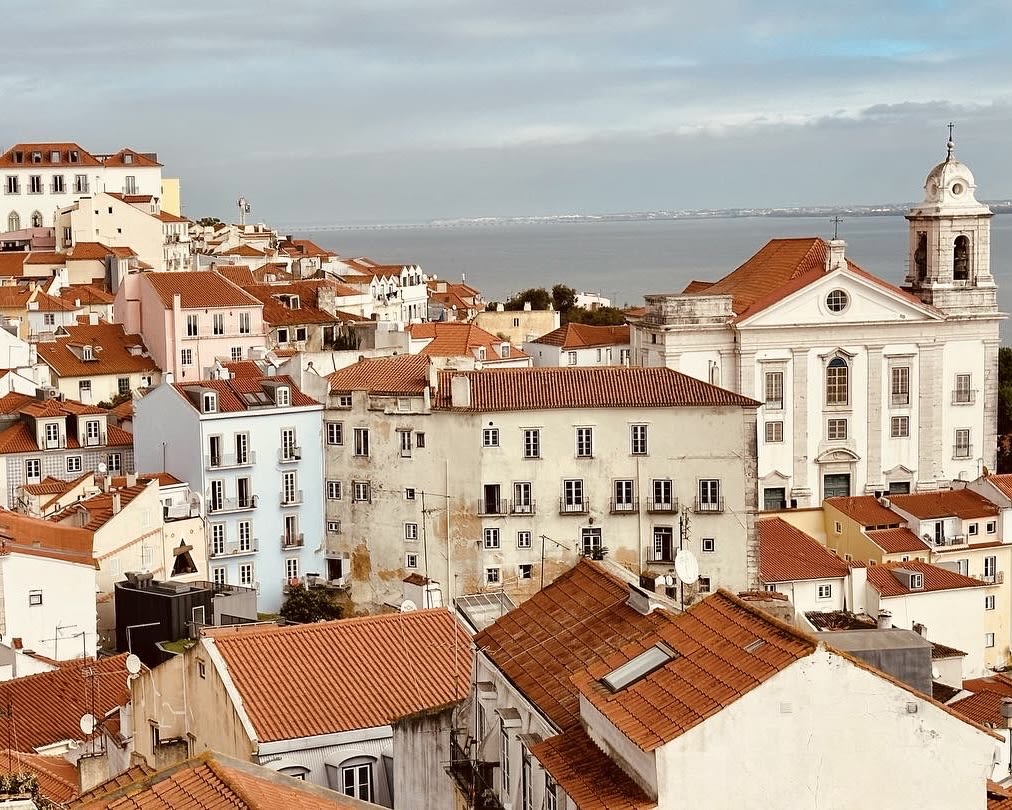
A tram ride through time
Morning: Hop on Tram 28
Welcome to Lisbon! If you’re just arriving, take it slow and soak in the atmosphere of this soulful city. I still remember how I kicked off my journey here—not with a packed sightseeing schedule, but with something much simpler and more magical: a ride on the legendary Tram 28. Start your day at Martim Moniz, the first stop on Tram 28. I recommend getting there early—around 8:30 am—to grab a window seat before the crowds join in. This rickety yellow tram is more than just transportation, it’s a time machine. Winding through Alfama, Graça, Baixa, and Estrela, it’s the most scenic (and nostalgic) way to get a feel for Lisbon’s neighborhoods. Sit on the right side for the best views, especially as the tram creaks through narrow lanes where walls feel close enough to touch.
Wandering Alfama — a meandering walk through Lisbon’s soul
After your ride on Tram 28, hop off near Sé Cathedral and let your journey shift gears. Put away the map. Slow your pace. Begin a carefree wander through Alfama, camera in hand. This place is a photographer’s paradise. Don’t rush. Don’t plan. And definitely don’t rely on Google Maps. Wear comfortable shoes with good grip—the cobbled stones can be slick, and the hills will test your calves.
Start at Sé Cathedral (Lisbon Cathedral)
This 12th-century Romanesque fortress of a cathedral is your anchor point. Take a moment to admire its solid, timeworn presence. Then walk around the right side onto Rua Augusto Rosa—your descent into Alfama’s storybook alleys begins here.
Into the maze: Rua de São João da Praça
Turn left onto Rua de São João da Praça, where Lisbon shifts into a softer gear. Narrow cobbled paths, laundry lines strung between balconies, the gentle murmurs of locals—it all feels timeless. The walls are alive with hand-painted azulejos, each one telling its own story.
Now’s the time to break away. I slipped into side alleys with no destination in mind. Some led to hidden squares, some to nowhere, and one ended with the haunting sound of fado floating from a tavern behind a cracked door. Street art pops up when you least expect it—portraits of fado singers, poetry stenciled onto stone, political murals in tucked corners.
The hills of Alfama
Parts of this walk get steep—especially if you veer uphill toward Largo de São Miguel or the Escadinhas de São Miguel. Take it slow. These hills are etched into Lisbon’s identity, but they aren’t easy on tired legs or unsupportive shoes.
Let the music find you
Even in daylight, Alfama hums with sound. I passed a small courtyard where a woman sang under a grapevine canopy—no stage, no performance, just her and the music. It was unscripted, raw, and unforgettable.
If you need a break, step into a tiny bar and order a Ginja—a cherry liqueur often served in a tiny chocolate cup. It’s a sweet, strong boost before the next climb.
Eventually, the path opens to a reward: the breathtaking Miradouro das Portas do Sol. The city spills below you: terracotta rooftops, whitewashed houses, and the Tejo River glinting in the sun. There’s a small kiosk café, benches to rest on, and often a street musician strumming something soft and nostalgic. Sit. Sip. Let the city unfold beneath you.
This is Alfama at its best—unhurried, unpolished, and unforgettable.
Evening: Sunset & simple dinner
Make your way to Miradouro da Senhora do Monte for a panoramic sunset. It’s less touristy than other viewpoints and has an unbeatable view of the city and river. For dinner, keep it low-key with a neighborhood taverna. Don’t forget a a glass of vinho verde—simple, fresh, undefined, unforgettable.
Day 2: Stories in the stones – from elevators to bookshops to Fado

After easing into Lisbon on Day 1, today is for exploring its many layers—literally and culturally.
Morning: Rise with the elevadores
Lisbon is a city of ups and downs, and it embraces it with charm. I started the day by hopping on a few of the famous elevadores (funiculars) — more than just transport, they’re part of Lisbon’s soul.
Elevador da Bica: Probably the most photogenic, it rolls up a steep hill lined with laundry, cafes, and tiled facades. I recommend riding it up and walking back down to soak in the view.
Elevador da Glória: It connects Praça dos Restauradores to Bairro Alto. You’ll find a lot of street art at the top, including the famous Graffiti Park.
Santa Justa Lift: A neo-Gothic iron elevator that takes you from Baixa up to Carmo Convent. The view from the top is worth the wait in line.
Tip: The lifts are included if you have the Viva Viagem/Navegante transit card—no need to pay separately.
Late morning: Literary Lisbon
As a book lover, visiting Bertrand Bookstore in the Chiado district was a quiet highlight. It’s the oldest operating bookstore in the world, open since 1732. The charm is in its simplicity—narrow aisles, wooden shelves, and a long literary legacy.
Stroll around Rua Garrett afterward—full of historic cafés and boutique shops.
Afternoon: Baixa shopping district
From Chiado, head down to the Baixa district—Lisbon’s elegant downtown area rebuilt after the 1755 earthquake. I wandered along Rua Augusta, stopping for souvenirs, ceramics, cork products, and a sweet ginginha (cherry liqueur) in a chocolate cup. The area buzzes with life and street performers.
Don't miss the Arco da Rua Augusta for panoramic views of the Praça do Comércio and the river.
Evening: Fado & wine in Alfama
As night fell, I headed back to Alfama, where the narrow alleys are alive with music. I dined at a fado restaurant with some red wine—candle-lit, intimate, where singers poured their hearts out. It’s not just entertainment—it’s a cultural experience that leaves you quiet and moved.
Day 3: Castles, river views, and Lisbon’s creative soul
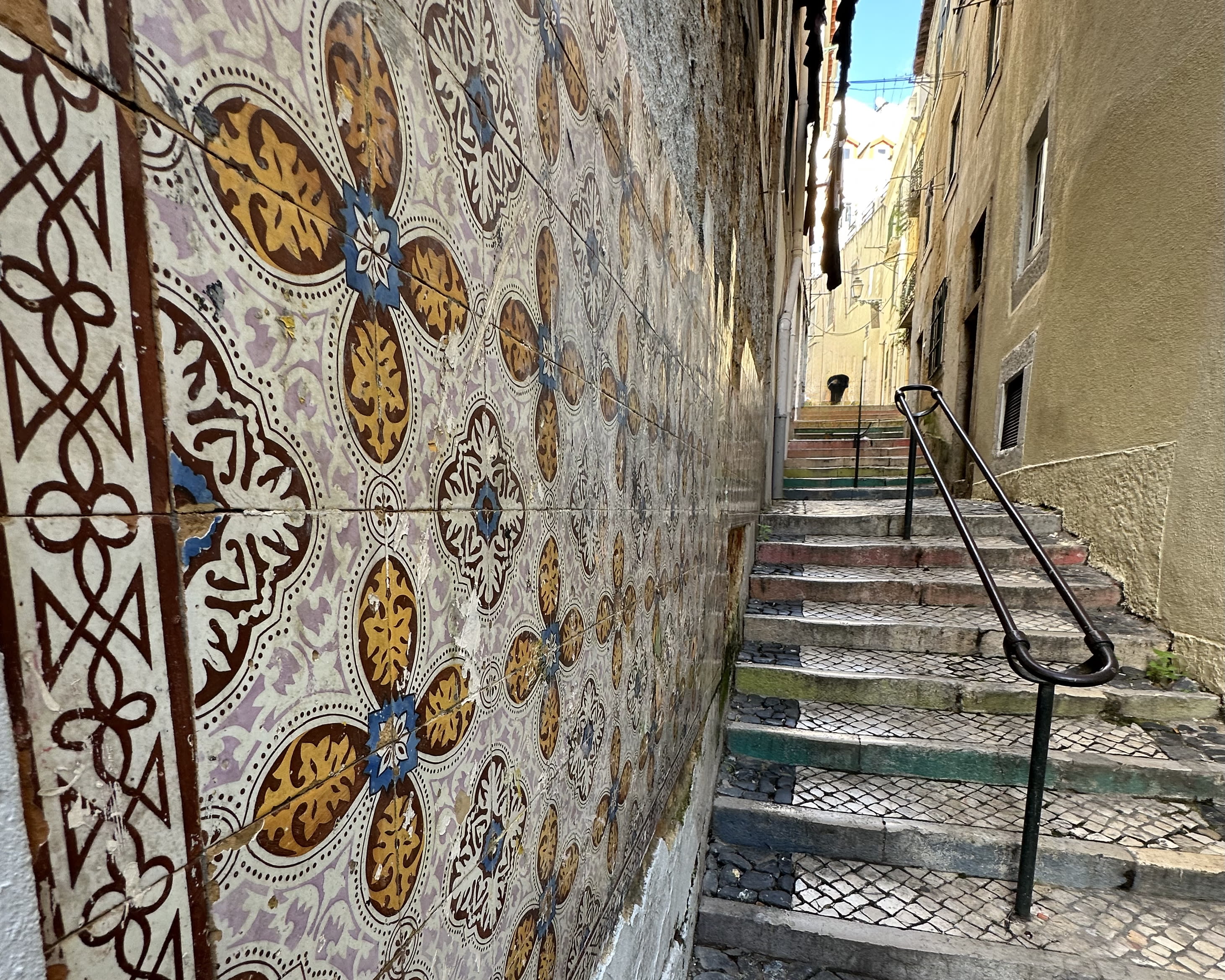
After two days of wandering old neighborhoods and climbing hills, today is about seeing Lisbon from above, across the river, and then down through its most creative corners. This is a full, exhilarating day, but you can easily split it over two if you prefer a slower pace.
Morning: Castelo de São Jorge
I began the day with a visit to Castelo de São Jorge, Lisbon’s ancient fortress perched on the ccity’shighest hill. The views from the ramparts were sstunning—redrooftops, church towers, the shimmering river—and I even spotted peacocks roaming the grounds like they owned the place.
Midday: Ferry to Cristo Rei
From Cais do Sodré, I hopped on a ferry to Cacilhas, then made my way up to Cristo Rei: Lisbon’s own Christ the Redeemer statue. The views from the top platform are phenomenal, especially looking back toward the city and the 25 de Abril Bridge. If yyou’reshort on time, even the base platform offers great views and a moment of peaceful reflection.
Optional pause: riverside time
Back in Lisbon, I walked along the Tagus riverfront. Wide promenades, little pop-up kiosks, and lots of people relaxing. A perfect break before the next wave of exploration.
Evening options: Choose your vibe
After a packed day, you can go three ways depending on your mood.
Option 1: LX Factory – Urban Creativity
If you’re into street art, indie shops, and creative energy, head to LX Factory. This converted warehouse district under the 25 de Abril Bridge is full of surprises—from rooftop bars to print-shop bookstores. I wandered through murals, browsed vinyl records, and found a hole-in-the-wall café that served the best lemon tart of my trip.
Great around sunset and into early evening.
Option 2: Time Out Market – Foodie Playground
Prefer food over fashion? Go to Time Out Market instead. I showed up starving and left completely content after a round of gourmet tastings: grilled octopus, a bifana sandwich, and local wine. It’s buzzy, a bit touristy—but delicious and worth it.
You can combine both if you’re energetic. They’re about 25 minutes apart by foot or 10 minutes by bike/scooter.
Option 3: Bairro Alto or Cais do Sodré
Your night can go one of two ways:
If you want music and mingling, head to Bairro Alto. The nightlife spills into the alleys with wine, laughter, and late-night conversation.
If you’re up for a trendier scene, explore Pink Street in Cais do Sodré—a mix of hip bars, clubs, and live DJs. I may have gotten a little drunk here (don’t judge), but it was all in good spirit. Lisbon nights are irresistible.
If this feels like a lot (it was!), feel free to break it into two days.
Caution: Lisbon’s cobblestones + wine = slippery combo. Wear good shoes and take it slow!
Day 4: Belém – monuments, legends, and custard tarts
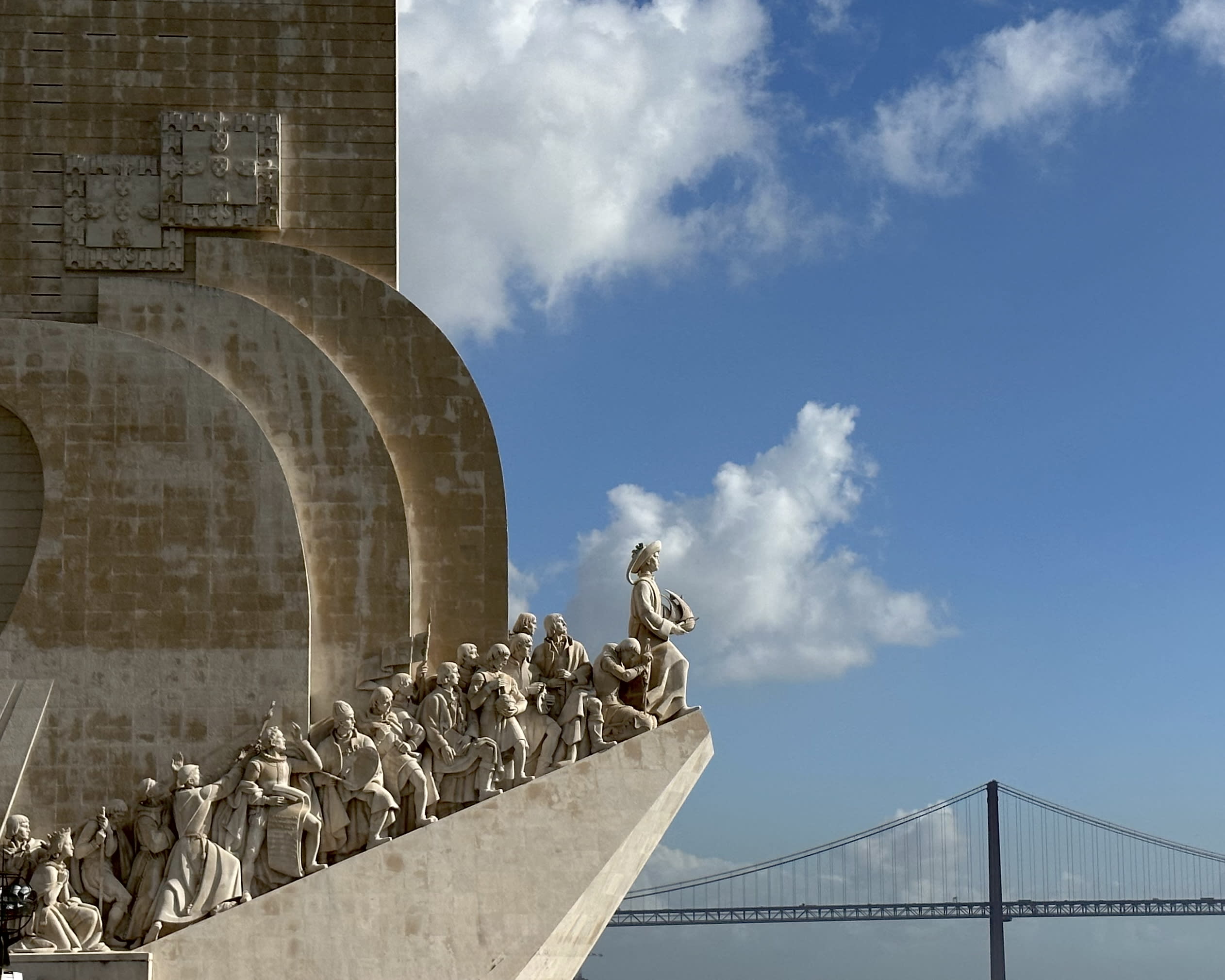
If there’s one place in Lisbon that captures Portugal’s glorious maritime past and its sweetest invention in one sweep, it’s Belém. Just a short tram or train ride from the city center, this riverside district feels like stepping into a golden age.
Getting there
I took the Tram 15E from Praça da Figueira. It’s a pleasant ride that drops you near the major landmarks. You can also take the train from Cais do Sodré. Either way, get there early. Belém gets busy.
Jerónimos Monastery (Mosteiro dos Jerónimos)
The first thing you’ll notice? The grandeur. Built in the 1500s to celebrate Vasco da Gama’s voyage to India, the Jerónimos Monastery is Portugal’s most stunning example of Manueline architecture—intricate carvings, vaulted ceilings, and maritime motifs in stone.
I spent over an hour just admiring the cloisters. Every arch and column seemed to tell a story of exploration and faith. The church is free, but the cloisters require a ticket. Book online to skip the line.
Belém Tower (Torre de Belém)
A short walk along the Tagus River brings you to this iconic fortress—built to defend Lisbon and now one of its most photographed sights. It looks like something out of a storybook, standing guard over the water.
You can climb to the top for river views, but even just walking around the base (especially at low tide) is rewarding.
Pastéis de Belém — where it all began
After all that history, it was time for what I really came for: the original pastel de nata.
At Pastéis de Belém, they’ve been making custard tarts since 1837, using a secret monastic recipe. Yes, it’s touristy. Yes, there’s a line. But YES—it’s absolutely worth it.
My pro move: Grab a few to go, find a bench in the Jardim de Belém, and savor them warm with a sprinkle of cinnamon and powdered sugar.
Wind down by the river
I ended my day with a riverside stroll back toward the Discoveries Monument (Padrão dos Descobrimentos)—a tribute to Portugal’s explorers. As the sun dipped, the stone figures cast long shadows and I felt like I’d walked through centuries.
Day 5: Choose your own adventure – Sintra or Cascais

National Palace of Pena, Sintra
After a full day exploring castles and creative corners, I wanted something different—but still memorable. So I gave myself two choices, and you can too: head into the hills for Sintra’s fairytale palaces or out to the coast for Cascais’ salty breezes. Both make a perfect morning escape from Lisbon, and you can be back in the city by evening for Fado, food, or a good glass of wine.
Option 1: Morning in Sintra – palaces & mysticism
Catch an early train from Rossio Station to Sintra (40 min). Once there, visit:
Palácio da Pena: A colorful Romanticist palace perched on a mountaintop
Quinta da Regaleira: If time allows, explore this mystical estate with gardens, towers, and its iconic Initiation Well
Tip: Take the 434 tourist bus or a tuk-tuk from the station—walking is steep and time-consuming.
Option 2: Morning in Cascais – ocean breezes & lazy promenades
Instead, hop on a train from Cais do Sodré to Cascais (also 40 min) and spend a relaxed morning by the sea.
Walk the seafront promenade
Visit Boca do Inferno, a dramatic cliffside blowhole
Grab a gelato and browse the boutique-lined streets
Tip: Bring your swimsuit if the weather’s good—the beaches are calm and swimmable.
Evening back in Lisbon – Bairro Alto or Cais do Sodré
After a scenic morning outside the city, return to Lisbon and end your day in one of these vibrant neighborhoods:
Bairro Alto: Head uphill for Lisbon’s bohemian quarter. Here you’ll find narrow alleys, candlelit Fado restaurants, and casual bars spilling onto the streets. It’s where Lisbon comes alive at night—but still feels intimate.
Cais do Sodré / Pink Street: For a more modern nightlife vibe, walk to Rua Nova do Carvalho, also known as Pink Street. Trendy cocktail bars, clubs, and late-night eats abound. It’s buzzy and energetic—ideal if you’re ready to let loose.
Choose what feels right
Whether you’re drawn to Sintra’s fairytales, Cascais’ salt air, or Lisbon’s nighttime rhythms, Day 4 is about contrast and rhythm—seeing a different side of Portugal while giving yourself room to relax or roam.
Day 6: Lagos – coastal charm, coves, and cliffside wonders
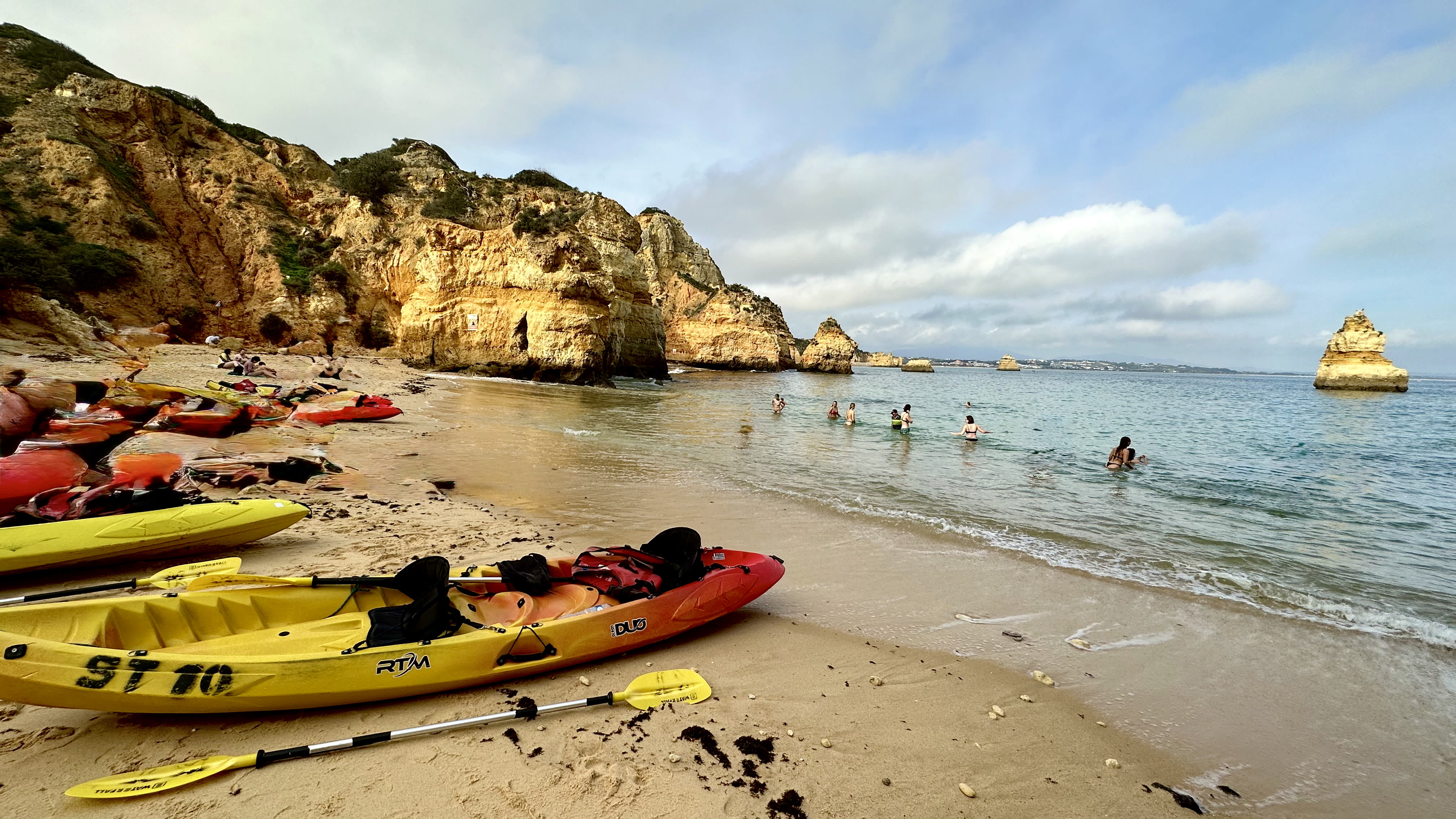
I rented a car for this leg of the trip—a great choice for flexibility. The drive from Lisbon to Lagos takes around 2.5–3 hours via the A2 and A22 highways.
Arrival & cliffside wonders
Midday: arrive in Lagos & check-in
Settle into your accommodation—ideally near the historic center or Praia Dona Ana. Stretch your legs with a light lunch and a walk through the old town’s cobbled lanes.
Afternoon: Ponta da Piedade
Your first stop? The dramatic headland of Ponta da Piedade. Walk the boardwalk or take the stairs down the cliffside. The golden rock formations, caves, and turquoise waters here are surreal—especially near sunset.
Photo tip: Late-afternoon light makes the cliffs glow.
Evening: dinner in the Old Town
Head back into town for dinner. Try fresh seafood—grilled octopus or cataplana (seafood stew)—paired with local Algarve wine. (I am a vegetarian, so I chose one of several fantastic Indian restaurants in old town).
Day 7: Beaches & caves by land and sea
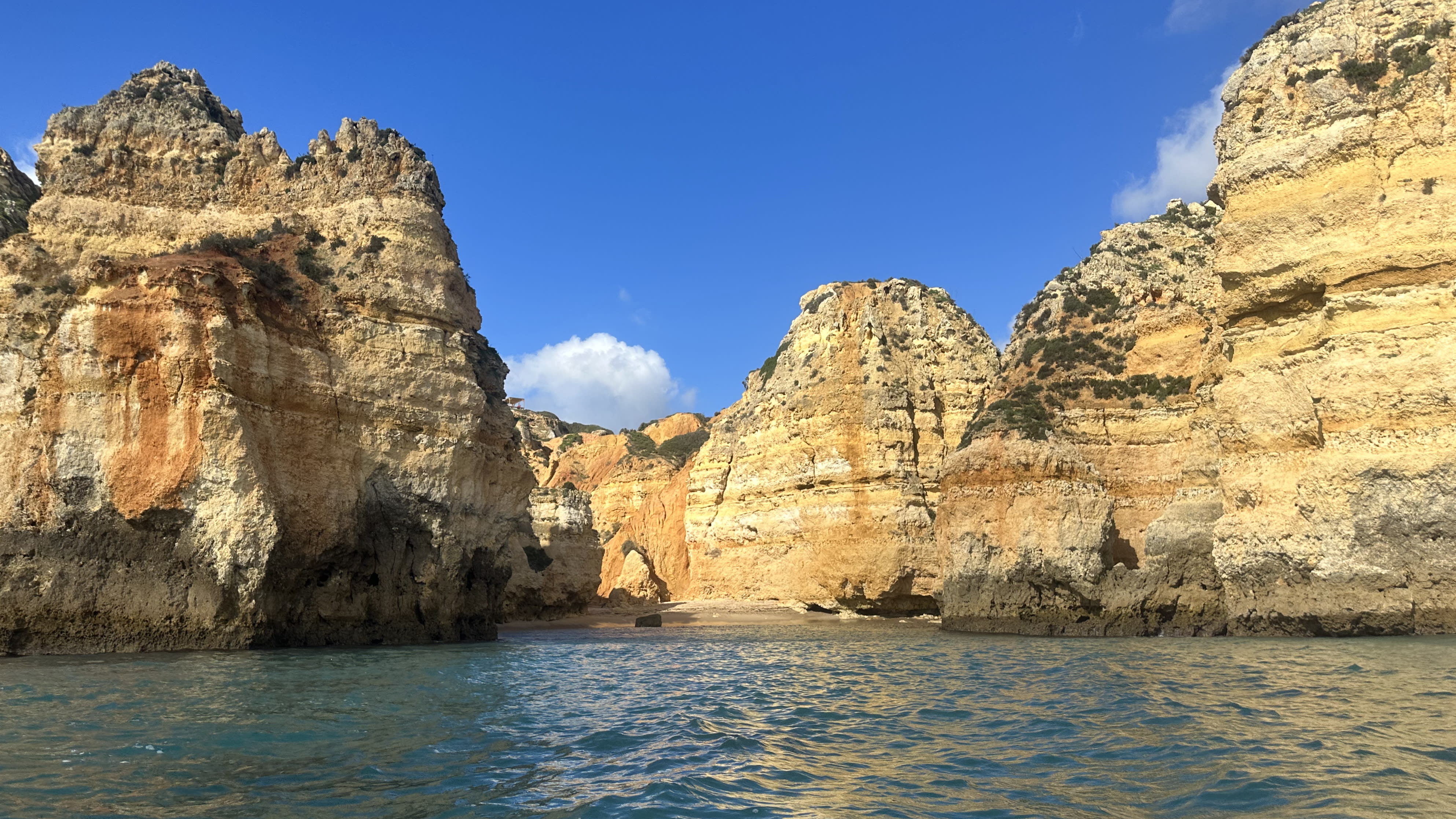
Morning: Kayak or boat tour of the caves
Book a kayak or grotto boat tour that departs from Praia da Batata or Lagos Marina. You’ll explore sea arches, hidden coves, and water-access-only beaches like Camilo and Ponta da Piedade caves.
Kayak if you’re feeling active. Boat tours are more relaxing but just as scenic.
Midday: Beach time
Relax at Praia do Camilo or Praia Dona Ana. Both are tucked between cliffs and accessible via wooden staircases.
Afternoon: Lunch & local shops
Enjoy a casual lunch at a cliffside café, then browse ceramics, linen, or cork goods in the town’s artisan shops.
Evening: Watch the sunset at Praia do Amado
(Optional Drive) If you’re up for a short scenic drive (~40 min), head west to Praia do Amado on the Costa Vicentina for a wilder coastline and killer sunset views.
Day 8: West Coast drive or relaxed Lagos day
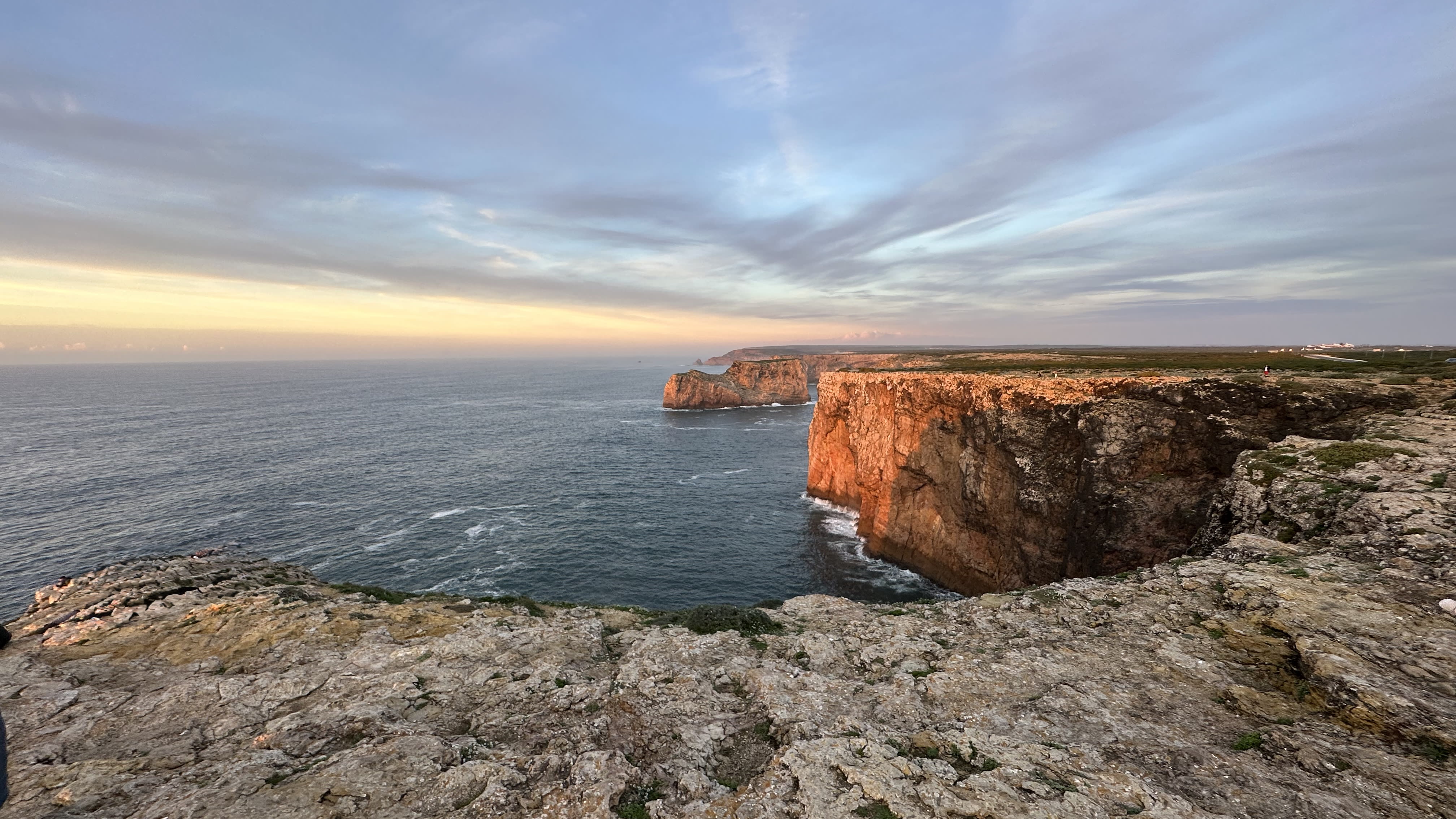
Option A: West Coast scenic drive (half-day loop)
Take a coastal road trip to:
Sagres: Visit Cabo de São Vicente, Europe’s southwestern tip
Fortaleza de Sagres: Windy, wild, and cinematic
Stop for a beach walk at Praia da Bordeira or Arrifana
Pack water, sunscreen, and your camera—the cliffs and empty beaches are phenomenal.
Option B: Stay local & unwind
Sleep in, grab brunch in the old town, then:
Visit the Lagos Slave Market Museum (for historic context)
Stroll the harbor promenade
Have one last pastel de nata at a seaside café
Evening: Farewell dinner by the water
Wrap up your Lagos adventure with a sunset dinner near Marina de Lagos—fresh seafood, ocean breeze, and perhaps a glass of port to toast your Algarve escape.
Day 9: Porto
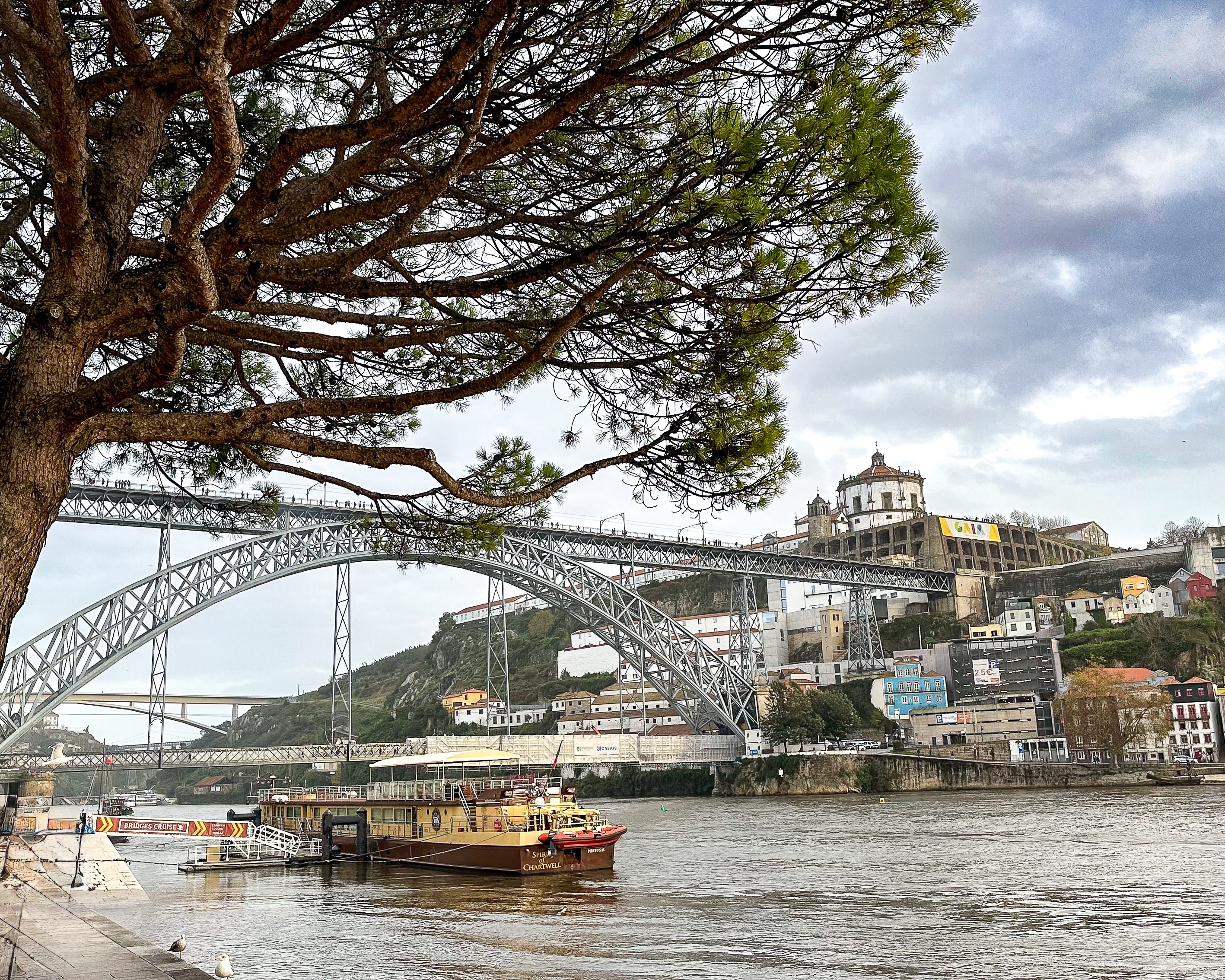
Luís I Bridge in Porto
From Sé to the cellars: A walk into the soul of the city
Porto invites you to explore its layers—from hilltop cathedrals to riverside taverns, from colorful houses to golden ports. This first day takes you on foot, by boat, and by cable car through the best of what the city reveals when you slow down and look closely.
Morning: From Sé to the riverside, step by step
Begin at Sé Cathedral, Porto’s hilltop stronghold. Take the stone stairs downhill through old alleyways—past tiled homes, tucked-away bars, and glimpses of the river below.
I paused at a few tiny bars carved into the hillside, where I was offered a splash of aguardente or homemade vinho verde. The people here are warm, the drinks strong, and the vibe unforgettable.
Midday: Douro River boat trip
Before lunch, I boarded a Douro River boat tour from the Ribeira quay—a relaxing 50-minute cruise under all six of Porto’s bridges. From the boat, the colorful Ribeira houses, terraced wine cellars, and domed churches feel like a painting come to life.
Tip: Go midday or late afternoon when the light is soft and the colors pop. It’s one of the best ways to photograph Porto.
After the cruise, I had lunch right by the Ribeira: a flavorful vegetarian dish made with local ingredients. For seafood lovers, grilled sardines, octopus salad, or the bold local Francesinha sandwich are also great options.
Afternoon: Cross the bridge & take the cable car
Walk across the lower level of Dom Luís I Bridge into Vila Nova de Gaia. Once there, ride the cable car up to the Miradouro, with sweeping views of Porto’s skyline and the boats below.
Photo tip: Take a cable car selfie with the bridge behind you—one of the best angles of the city.
Evening: Wine tasting & Fado in Gaia
Next, I joined a Port wine cellar tour. Gaia is famous for them. I learned about aging methods and tasted tawny, ruby, and white port straight from the barrel.
The best part? A live Fado show inside the cellar—the music echoing through old stone walls as the aroma of aging wine filled the air.
Twilight walk & dinner
As the sky turned amber, I walked along Gaia’s riverside promenade, soaking in the lights across the water. I found a simple restaurant with a view, ordered a light meal, and watched Porto glow across the Douro.
Day 10: Tiles, towers, and bookstore dreams
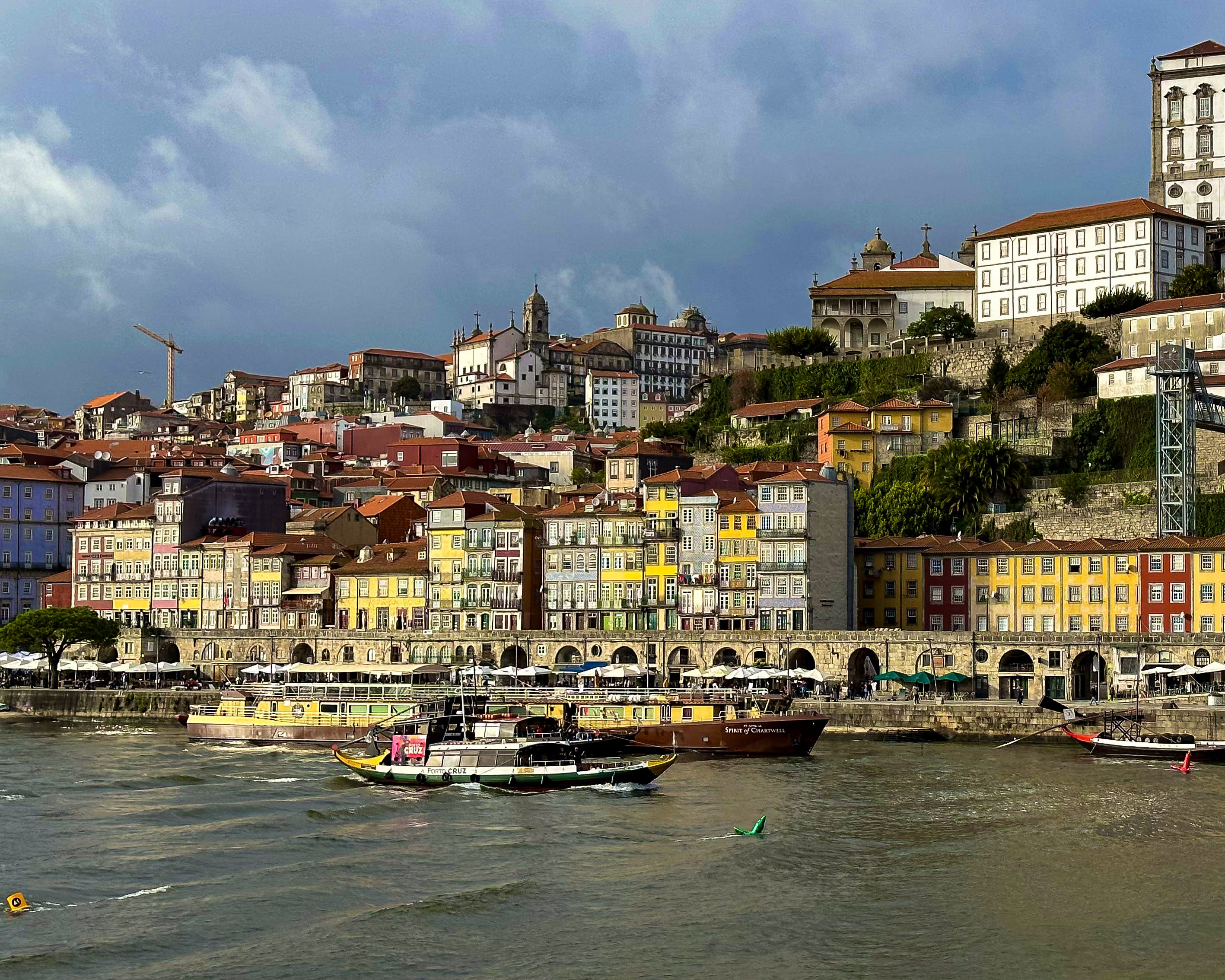
This day was all about walking through Porto’s historic core—where churches wear blue tiles like cloaks, bookshops look like movie sets, and every corner hides another gem.
Estação São Bento
Start your day at the São Bento Railway Station—but not to board a train. Inside, over 20,000 azulejos (blue tiles) depict Portugal’s history in exquisite detail. It’s a museum disguised as a station.
Livraria Lello
Just a few minutes away is one of the most beautiful bookstores in the world. With its stained glass ceiling and twisting staircase, Livraria Lello feels more like a cathedral of literature. It’s said to have inspired J.K. Rowling’s vision of Hogwarts, as she lived in Porto while teaching English in the early ‘90s.
Tip: Buy your entrance voucher online to skip the queue.
Torre dos Clérigos
Next up: the iconic Clérigos Tower. Climb the 200+ steps for a sweeping view of Porto’s rooftops and river. The spiral staircase is tight, but the view from the top is worth every step.
Igreja do Carmo & Igreja dos Carmelitas
Across from the tower is a unique side-by-side pair of churches: Igreja do Carmo (famous for its tiled façade) and the Carmelitas Church, with a narrow house squeezed between them (yes, really!). The azulejos on Carmo’s outer wall are some of the most photographed in Porto.
Afternoon: Lunch in the historic center
For lunch, wander into a nearby tavern or try a vegetarian version of Porto’s iconic Francesinha—some places offer them with mushrooms or seitan.
Igreja dos Congregados
A short walk away, near São Bento, this compact church features yet another jaw-dropping tiled façade. It’s often overlooked, but absolutely worth a quick stop and a photo.
Day 11: Shopping streets, café glamour, and tiled wonders
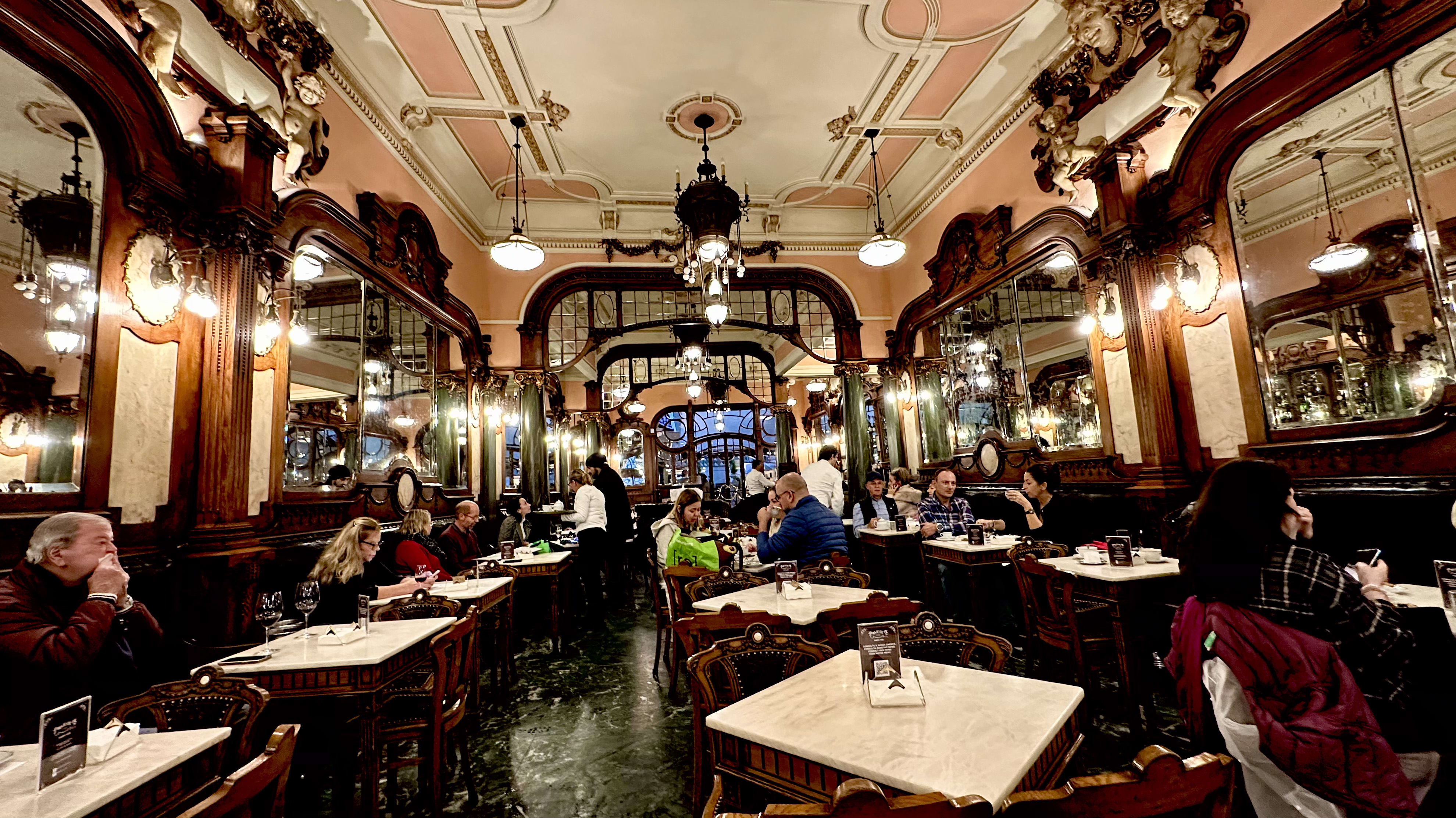
This day took me into the modern heart of Porto, where grand cafés meet tile-covered chapels and bustling streets.
Rua Santa Catarina
Start your day walking Rua Santa Catarina, Porto’s main shopping street. It’s a mix of international stores, local boutiques, and cafés buzzing with life.
Majestic Café
Step into Majestic Café, an Art Nouveau masterpiece where waiters wear bowties and the chandeliers sparkle. I sipped an espresso and imagined the 1920s intellectuals who once gathered here.
Tip: It’s pricy, but the ambiance is the real indulgence.
Capela das Almas (Chapel of Souls)
At the top end of Rua Santa Catarina is this striking chapel, covered entirely in blue and white azulejos depicting scenes from the lives of saints. It’s mesmerizing—and impossible not to photograph.
Optional add-ons & evening ideas
Walk to the Bolhão Market (if open) for traditional food and atmosphere.
Enjoy dinner near Avenida dos Aliados, where architecture meets elegance.
Stroll the Douro once again for a final riverside nightcap.
Enjoy your walk through Porto’s storybook streets!
Absolutely—that’s a perfect standalone “slow day” in Porto, mixing architectural grandeur with breezy ocean vibes.
Day 12: Palatial beauty & ocean breezes
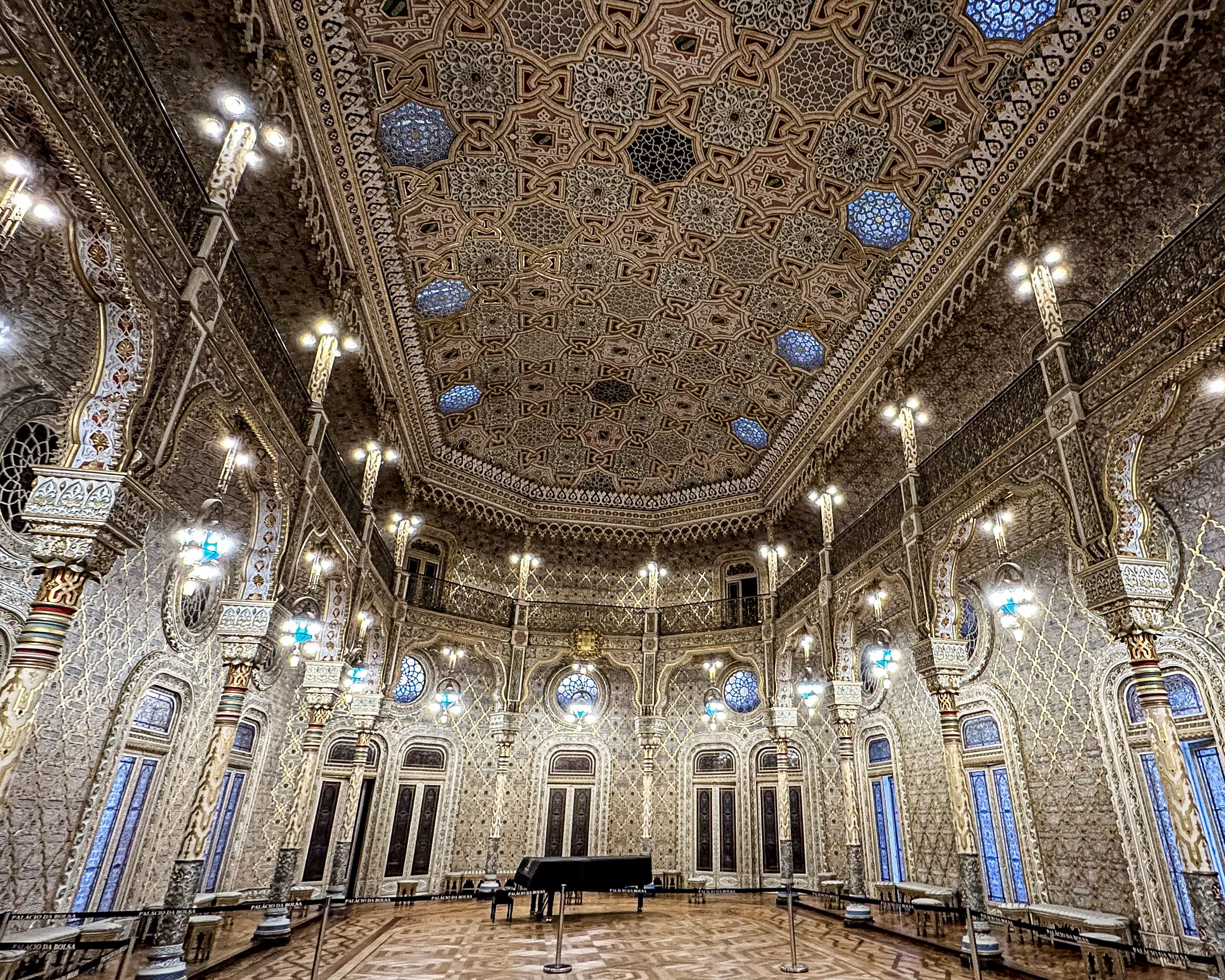
From Palácio da Bolsa to Foz do Douro
After days of tiled churches, riverside walks, and port wine, I slowed things down—but didn’t compromise on the views. This day was about grandeur, coastlines, and cocktails.
Morning: Palácio da Bolsa (Stock Exchange Palace)
I started the day with a guided tour of the stunning Palácio da Bolsa, one of Porto’s most majestic buildings. The neoclassical exterior is impressive, but it’s what’s inside that truly stuns—ornate halls, mosaic floors, and the jaw-dropping Arab Room, which looks like it was airlifted from Granada.
Tip: Tours are required and often fill up. Book in advance if you can.
Midday: Tram to Foz do Douro
From the city center, I boarded the charming historic Tram 1, which rattles along the Douro River all the way to the coast at Foz do Douro. It’s a scenic 25-minute ride that feels like a step back in time.
Photo tip: Sit on the right side of the tram for the best river views.
Afternoon: Oceanside promenade & cocktails
Once I arrived in Foz, I took my time strolling the seaside promenade. The Atlantic breeze, crashing waves, and relaxed vibe made for a welcome contrast to the city’s intensity.
I settled into a beachside café with a cocktail in hand and just watched the world go by. The walkways here are lined with palm trees, locals jogging, and families enjoying the sea air.
Evening: Unwind & watch the sunset
You can stay in Foz for a seafood dinner or head back to Porto’s center by tram or Uber. Either way, this day reminded me of the beauty of slowing down.
Day 13: Douro Valley day trip
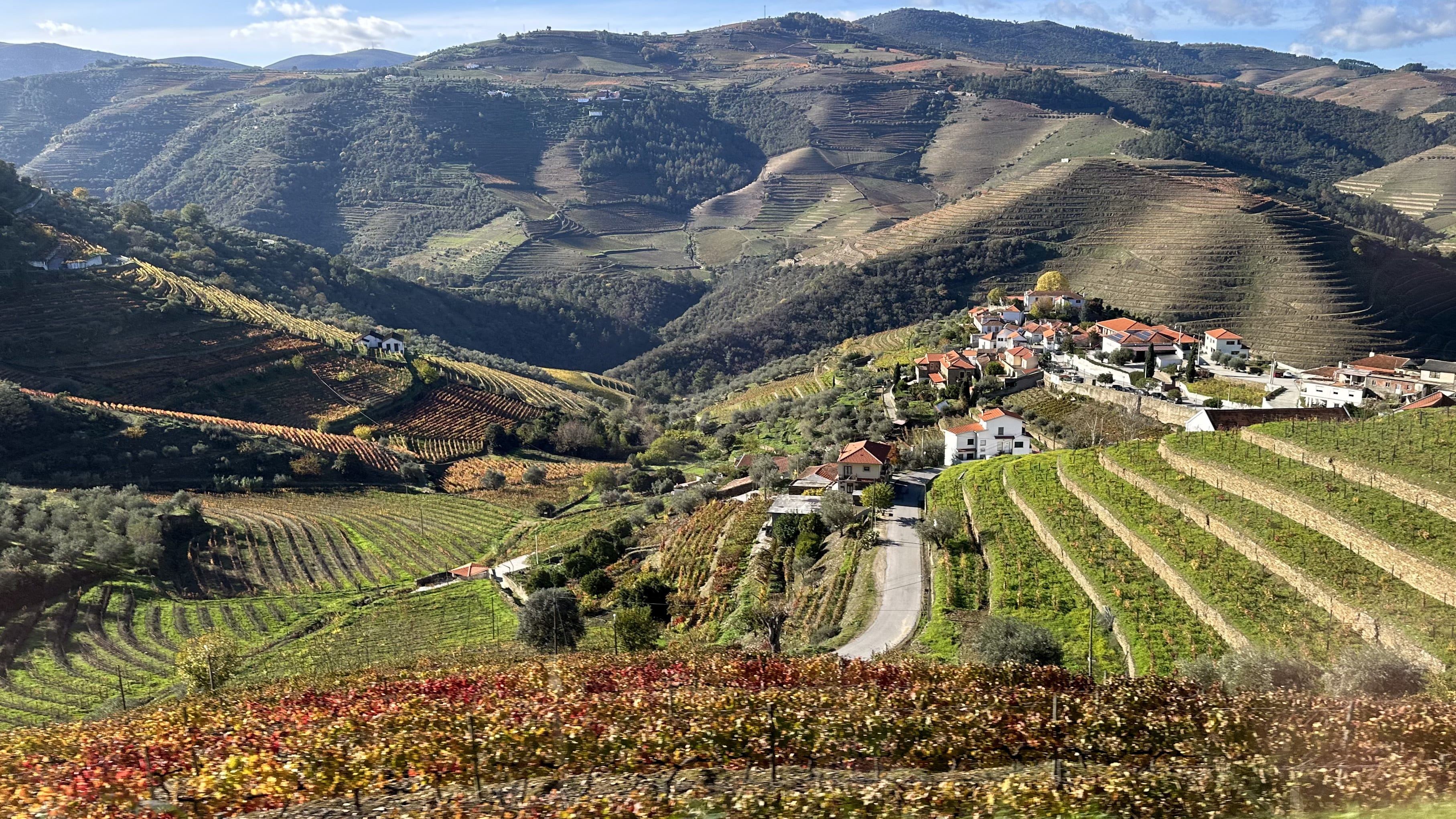
Douro Valley
Vineyards, river views, and Port wine bliss
Of all the day trips from Porto, none stayed with me like the Douro Valley: a landscape carved by the river, lined with terraced vineyards, and soaked in the scent of aging port wine. I joined a full-day guided bus tour that took care of logistics and left me free to enjoy the views—and the tastings.
Morning: Scenic drive to Pinhão
We left Porto in the morning, winding through countryside roads toward Pinhão, a picturesque village at the heart of the Douro wine region. Along the way, we passed steep vineyard terraces and hillside estates that looked like they belonged in oil paintings.
Tip: Sit on the right side of the bus for the best river views.
Midday: Wine tastings & valley views
Our first stop was at a family-owned winery, where we toured the cellars and sampled a range of port wines—from young ruby to complex aged tawny. The warmth of the hosts, paired with the breathtaking vineyard backdrop, made this more than just a tasting—it felt personal.
We then had lunch (included in the tour). Hearty, home-style Portuguese food with generous glasses of wine to match.
Afternoon: Boat ride on the Douro
From Pinhão, we boarded a traditional rabelo boat for a gentle cruise along the Douro River. Floating past terraced vineyards and quiet estates, I saw the valley from a new angle—peaceful, timeless, and incredibly photogenic.
Photo tip: Bring a wide-angle lens or use pano mode. The valley stretches forever.
Evening: Return to Porto
We returned to Porto by early evening—sun-tired, wine-happy, and fully charmed by the valley’s magic. If you’re a wine lover or a landscape seeker, this day trip is a must.
Many tours include two wineries, lunch, the boat ride, and hotel pick-up. I recommend booking a small-group option for a more relaxed experience.
Day 14: Braga day trip
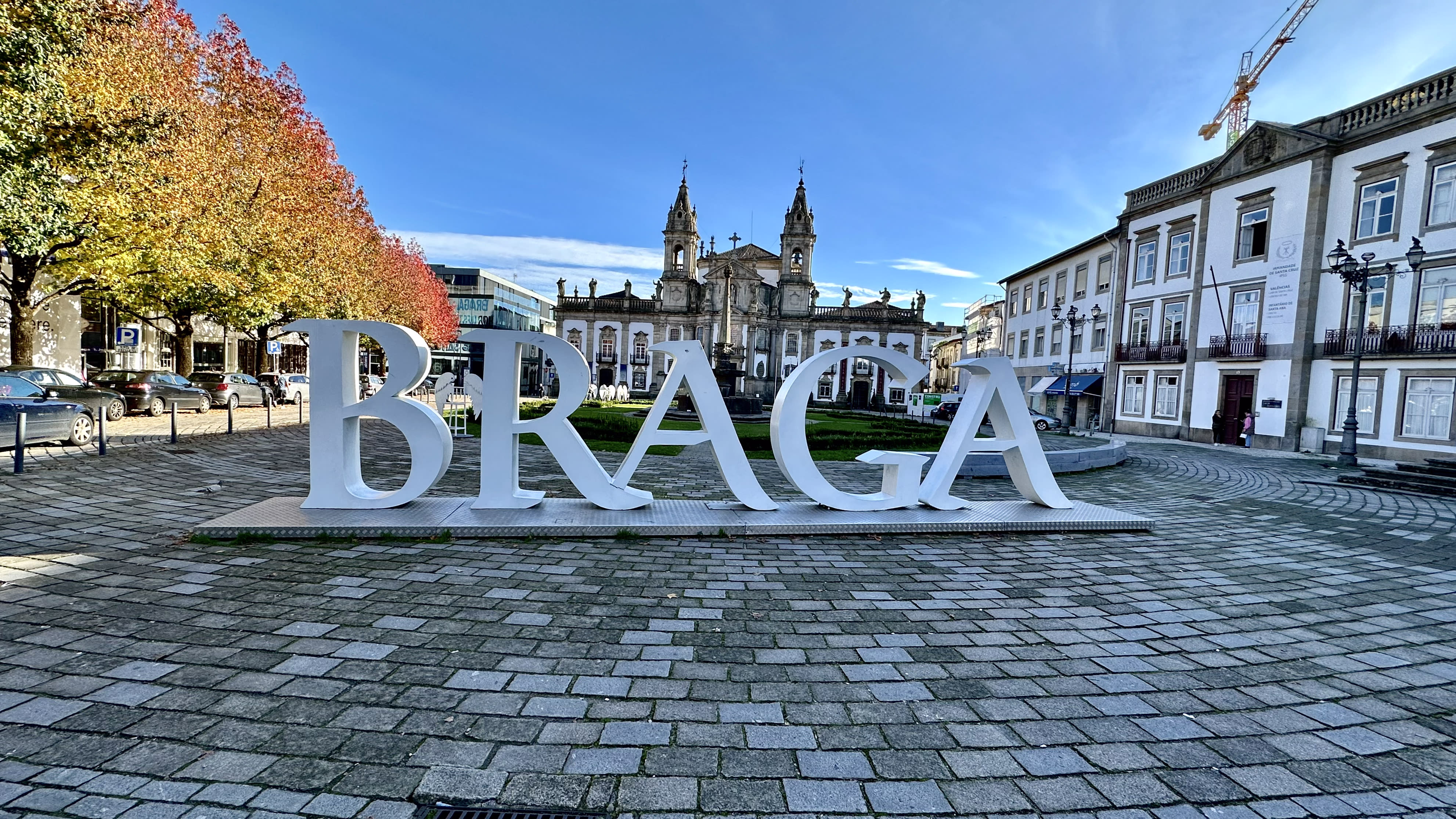
A journey through Portugal’s spiritual & historic heart
Just under an hour from Porto by train, Braga is a city where baroque churches, peaceful gardens, and sweeping staircases invite you to slow down and reflect. I spent a full day wandering its old-world streets—and left feeling like I had stepped back centuries.
Morning: Train to Braga & arrival through Arco da Porta Nova
I caught a morning train from São Bento station to Braga—about a 1-hour scenic ride. Arriving at the station, I walked straight into the historic city center, entering through the elegant Arco da Porta Nova: a grand 18th-century gate that frames your entry into old Braga.
Braga Cathedral (Sé de Braga)
One of Portugal’s oldest cathedrals, the Sé de Braga is a fusion of Romanesque, Gothic, and Baroque styles. I wandered its ornate chapels, admired the twin bell towers, and reflected on how this was once the spiritual capital of Iberia.
Garden of Santa Barbara & Praça da República
Next, I strolled through the Garden of Santa Barbara, where perfectly trimmed hedges and vibrant flowers framed the ruins of a medieval archbishop’s palace. Just steps away is the lively Praça da República, Braga’s main square full of fountains, cafes, and architectural charm.
Tip: This is a great spot to pause for a coffee and pastry.
Afternoon: Bom Jesus do Monte
I took a short ride (bus or taxi) to Bom Jesus do Monte, Braga’s most iconic site. The baroque zig-zag staircase leading up the hill is both symbolic and stunning—a spiritual climb lined with fountains, sculptures, and pilgrims.
If climbing isn’t your thing, there’s also a funicular (powered by water!) that takes you to the top. The view over Braga from the terrace is incredible.
Sanctuary of Our Lady of Sameiro
If time allowed, I continued to the nearby Sanctuary of Our Lady of Sameiro—a quieter, more modern pilgrimage site with panoramic views and a peaceful ambiance. It’s a serene contrast to Bom Jesus and makes for a perfect end to the spiritual loop.
Evening: Train back to Porto
I returned to Porto in the evening, with my mind full of peaceful gardens, church bells, and Braga’s rich sense of history. It’s a day trip I’d recommend to anyone looking for reflection and beauty in equal measure.
Need to know
Portugal travel tips: What I learned along the way
Wear comfortable shoes with good grip. Lisbon and Porto have slippery cobblestones and steep hills. Your feet will thank you.
Don’t rely too much on Google Maps in Alfama. Getting lost is part of the experience.
Start your Tram 28 ride at Martim Moniz early in the day to avoid crowds and grab a window seat on the right side for the best views.
Book popular attractions in advance—especially Livraria Lello, Palácio da Bolsa, and Jerónimos Monastery.
For a peaceful sunset, head to Miradouro da Senhora do Monte—fewer crowds and an unforgettable view.
Try Ginja in a chocolate cup from a local bar in Alfama—a sweet, strong local treat.
Take the cable car in Gaia after walking across the Dom Luís I Bridge—you’ll get great views of Porto from a fresh angle.
In Foz do Douro, relax by the ocean with a cocktail. The tram ride there is half the fun.
Use small-group or guided tours for Douro Valley. They handle logistics and let you enjoy the wine (responsibly).
Portugal is budget-friendly, but still offers rich culture and comfort. You can eat well, stay central, and explore deeply without overspending.

Travel Advisor
Sundar Rajan

Get in touch with Sundar
Did you like this guide? Reach out to customize and book your own experience. Or, just to chat about travel in general.
You can expect a response from Sundar within 1–2 business days. You’ll also be subscribed to our traveler newsletter (you can unsubscribe at any time).
For more inspiration and insider recommendations, visit our Portugal page.